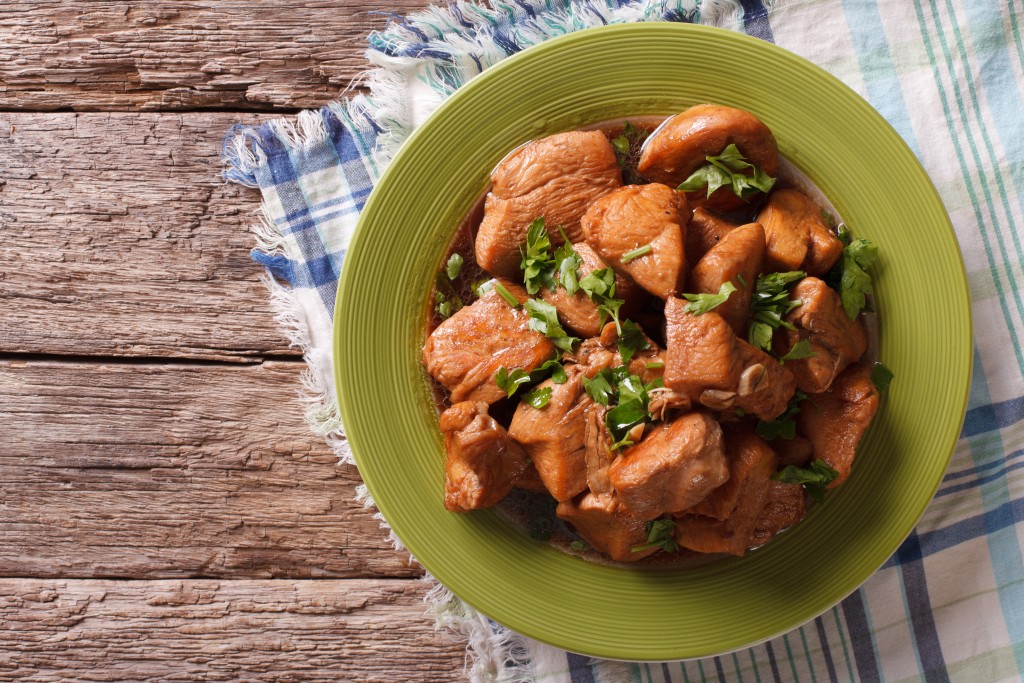Shrimp paste is a uniquely Asian condiment. Countries like Thailand, Vietnam, and Malaysia have their own versions, often using them for meat or vegetable dishes. In the Philippines, we have bagoong, a thick paste made from fermented seafood.
The most popular kind is bagoong alamang, which is ground shrimp left to marinate in salt for a few days. But Filipinos from different regions also use different kinds of fish and even oysters and clams to make bagoong.
Because of its distinct flavor, bagoong is used as a major ingredient in many classic Filipino dishes. Master these four crowd-favorite bagoong dishes to level up your simple meals.
Pork Binagoongan
Made with pork belly cut into bite-sized pieces, the bagoong is the star of this dish. The shrimp paste gives the stew its consistency, saltiness, and seafood flavor, so it serves as the foundation of the whole dish.
Vinegar is added to help balance the saltiness of the bagoong. You can also add tomatoes to make the dish a bit sweet and tangy. But you can skip the tomatoes if you want your binagoongan to keep longer.
Add a piece or two of siling labuyo to give your binagoongan a kick. You can also use Barrio Fiesta’s sweet and spicy bagoong to give more dimension to the flavor of your dish.
Pinakbet
Pinakbet is a quick, simple vegetable dish elevated by the bagoong. Since the veggies lack flavor, the shrimp paste gives them a bit of boost by adding saltiness and umami.
The main ingredients of pinakbet are okra, eggplant, ampalaya, squash, and string beans. Simmer until the squash turns soft and crumbly for a thicker consistency.
You can add protein to your vegetable dish by topping it with bite-sized pork belly. Crunchy lechon kawali is also a great addition, giving your pinakbet some texture.
Bicol Express
Bicol express is a favorite among chili lovers. This spicy dish uses coconut milk, coconut cream, and fatty pork cuts like pork shoulder or pork belly. The bagoong gives more body to the flavor with its saltiness and umami.
You can add fewer chilis if you want to turn down the heat. Using a sweet shrimp paste will also make your Bicol express friendlier on the tongue while adding another dimension to the flavor.
Some people like their Bicol express dry, while others prefer it with more sauce. You can adjust the consistency by adding water to the dish.
Bagoong Fried Rice

Bagoong rice is an easy-to-cook dish that can instantly elevate your meal. As with every fried rice recipe, leftover rice works best since it’s not as moist as a freshly cooked batch.
Simply sauté the rice in the shrimp paste. You can either use the bottled kind or cook your own bagoong guisado. The amount of bagoong you add depends on how strong you want its flavor.
The great thing about this recipe is its versatility. You can make a bagoong rice bowl by topping it with chopped mangoes, fried garlic bits, and crispy pork belly sliced thin. Bagoong fried rice also pairs well with daing na bangus or breakfast meats, such as sweet pork tocino, beef tapa, and longganisa.
Delight your family and guests with these classic Pinoy favorites or experiment with creative dishes using bagoong. Try some kare-kare pasta or a peanut-bagoong dip with thin, fried liempo cuts and steamed veggies on the side. It’s up to you on how you can use bagoong to level up your cooking.

